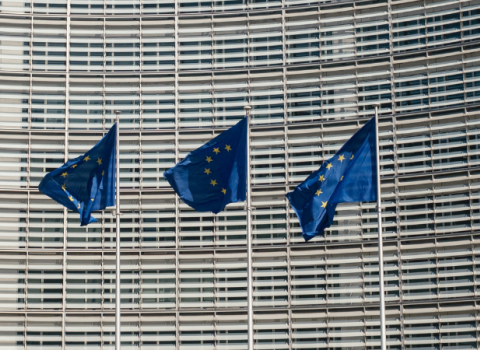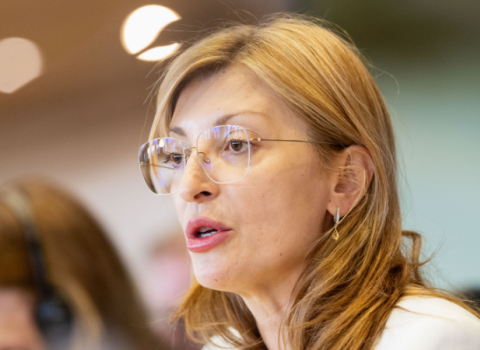EU Research Commissioner Máire Geoghegan-Quinn signed an agreement with a broad swathe of Europe’s research funding bodies this week, in an attempt to glue together the European Research Area and open up a single market for research jobs and scientific data in time for the start of Horizon 2020 – the EU’s new €80 billion research funding plan - in 2014.
“We want to ensure that researchers can move as freely between Rome and Riga, or Sofia and Stockholm, as they can between Wisconsin and Washington, or Massachusetts and Minnesota,” Geoghegan-Quinn said.
At the same time the Commission announced moves to increase availability of results from the research it funds by making open access a condition of Horizon 2020 funding. This followed an announcement on Monday (July 16) by Britain’s Science Minister David Willetts that the government there was to require free access to the results of all publically-funded research it funds.
Announcing the Commission’s push for open access, Neelie Kroes, European Commission Vice-President for the Digital Agenda, said taxpayers should not have to pay twice for scientific research. “We want to bring dissemination and exploitation of scientific research results to the next level. Data is the new oil," she said.
Geoghegan-Quinn said open access would “give taxpayers more bang for their buck” and “speed up important breakthroughs by our researchers and businesses, boosting knowledge and competitiveness in Europe.”
Coordinating national R&D
Complementing the opening up of the jobs market and the open access to scientific papers, the agreement signed by Geoghegan-Quinn on Tuesday aims to promote more coordinated research spending by Member States. National funding bodies are not putting up enough effort to create cross-border science infrastructures that “we need for the coming decades,” said Geoghegan-Quinn, with “less than 1 per cent of national research funding currently coordinated across borders.”
The EU has been working to create a single market for research for more than a decade. Among other measures, the research associations now promise to “encourage” their members to make recruitment procedures more transparent by posting new vacancies on a pan-European research jobs portal and to recommend making publicly-funded research available for free.
The Commission promised to discuss progress with the associations and to publish a progress review around July 2013.
At a summit in February last year, national governments gave the ERA initiative a new boost by setting 2014 as deadline for completion of the project. The Commission has now seems opted for fast, hassle-free, non-legislative measures in an attempt to meet that deadline. The question now is whether a non-binding agreement with EU level research associations will be enough to deliver ERA.
Encouragement and recommendations
The four associations representing European universities, research institutes, consortiums and public funding bodies, which signed the memorandum of understanding are the European University Association (EUA), the League of European Research Institutes (LERU), the European Association of Research and Technology Associations (EARTO) and NordForsk.
A fifth association, Science Europe (SE), joined the Commission and the other associations in signing a joint statement, saying they would encourage their members to address five key obstacles to the single EU research market. The statement calls for more effective national research systems, more transnational cooperation and competition, an open labour market for researchers, gender equality in research and better circulation of scientific knowledge.
To open up the jobs market, the memorandum says research vacancies should be filled, “according to open, transparent and merit-based recruitment procedures,” and that research organisations should “start or continue to advertise” its jobs on the existing EU research jobs portal EURAXESS.
The memorandum also encourages organisations to adopt gender strategies, in an attempt to attract more women to science jobs. “The work-life balance needs to be changed in a way that encourages both genders to work,” said Geoghegan-Quinn.
In addition, the memorandum calls on the research associations to explore the possibilities of setting up pan-European pension funds and the ability to move pension rights from one country to another.
Partnership approach
The formation of the European Research Area was first suggested by the Prodi Commission in 2000 to create a single market for research and ideas, much like the single market programmes of the early 1990s that led to single markets for many goods and services, and helped forge economic growth throughout that decade. Commission officials hope the new “partnership approach” will now achieve that, but admit privately that eventually, legislation might be unavoidable.
Legislating on the topic could prove to be very difficult because of the entrenched interests in universities, education ministries and research councils that have made a single market for research far harder to deliver than the other single market initiatives. Everybody seems to agree there should be more openness, mobility, efficiency and uniformity in the research sector – but each player wants the game to be played by their own rules.
Geoghegan-Quinn has said that she might recommend the next Commission, to be installed in 2014, to introduce legislation.
Horizon 2020
The Commission’s proposals for Horizon 2020 call for a strategy to create the single EU research market. Apart from opening up the jobs market, the Commission is also keen on seeing more coordination of spending of national R&D funding. At the EU level, Horizon 2020 is set to focus its spending on six ‘societal challenges’ including healthy ageing and clean energy. But national governments tend to stick to their own individual agendas, failing to use Europe’s combined leverage to address common societal challenges, and to create more jobs.





 A unique international forum for public research organisations and companies to connect their external engagement with strategic interests around their R&D system.
A unique international forum for public research organisations and companies to connect their external engagement with strategic interests around their R&D system.